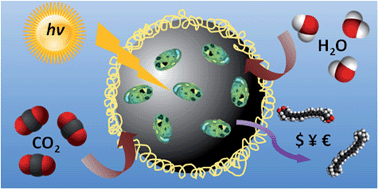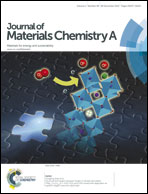Green and sustainable production of high value compounds via a microalgae encapsulation technology that relies on CO2 as a principle reactant
Abstract
A very promising and facile one-pot synthesis pathway is presented for the microencapsulation of live cells in a very porous core–shell system based upon a robust matrix. (Alginate–SiO2–polycation) shell@(alginate–SiO2) core hybrid beads, on the millimeter scale, containing live cells are obtained through cross-linking chemistry and the polycondensation of silicic acid in conjunction with the use of a polycation to negate the surface charge on silica. Very interestingly it is revealed that the polycation used (PDADMAC) plays a very important role in the formation of highly robust core–shell beads. PDADMAC acts as a catalyst in the polycondensation of silicic acid, leading to the formation of a resistant double layer shell comprising of an interior layer of alginate–SiO2 with a very homogeneous distribution of porous SiO2 and an external layer of porous PDADMAC that confines SiO2 within the bead. The photosynthetic chlorophyta Dunaliella tertiolecta, which produces high value metabolites (such as anti-oxidants, pharmacologically active compounds, neutraceuticals etc.) via photosynthesis, has been encapsulated within this core–shell system. Oximetry and fluorescence measurements highlight how this algal culture can remain photosynthetically active over an extraordinarily long period of 13 months for high value compound production, whilst entrapped within a highly porous, mechanically and chemically stable, optically transparent matrix, with no observable leaching of the cells from the core of the beads. HPLC has been employed to highlight the presence of excreted metabolites, based on neutral sugar building blocks such as arabinose, galactose and xylose, in the surrounding media. These results reveal how this kind of high performance, low-cost, and easily scaleable core–shell living material could be employed in large scale photobioreactors (PBRs), to potentially facilitate metabolite harvesting whilst protecting the culture from external contamination and for green energy production and environmental (CO2) remediation.


 Please wait while we load your content...
Please wait while we load your content...